What Size Wire for 30 Amps 200 Feet (Tips & Recommendation)
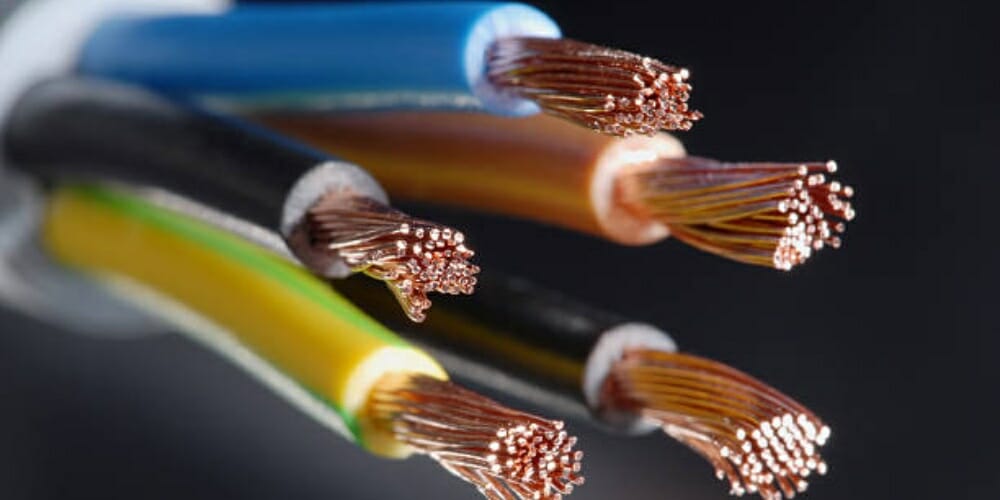
Whether you run an extension cord or underground conduit, proper execution and choosing the correct wire size is a must. Wiring with the wrong electrical wire sizes can lead to disastrous outcomes. Sometimes, it might lead to a fire, damaged appliances, and melted wires. So, considering all of this, I’m planning to teach what size wire is needed for 30 amps at 200 feet.
In general, to run a 30 amp circuit for 200 feet, you’ll need a 4 AWG wire; this is the ideal selection for your wiring project. If you are using a 120V, it will give you a 2.55% voltage drop. This voltage drop is below the recommended 3% voltage drop.
Allowable Voltage Drop
If you are using a low voltage installation and that connection is coming from a public distribution system, you need to maintain below 3% of voltage drop for lighting and below 5% for other uses. Exceeding these values can result in very harmful outcomes. So, remember to keep the voltage drop inside the safe zone.
Recommended Wire Size for 30 Amp, 200 Feet Run
For any wiring project, you should choose wires depending on your long-term requirements. So, the wire material type is crucial. For instance, when buying, you should pick from copper wires and aluminum wires.
If you pick copper, 4 AWG is enough for a 30 amp, 200 feet extension cord. On the other hand, 300 Kcmil aluminum wire will do the trick.
Keep in mind: According to the amp value, the wire size might change.
Aluminum or Copper?
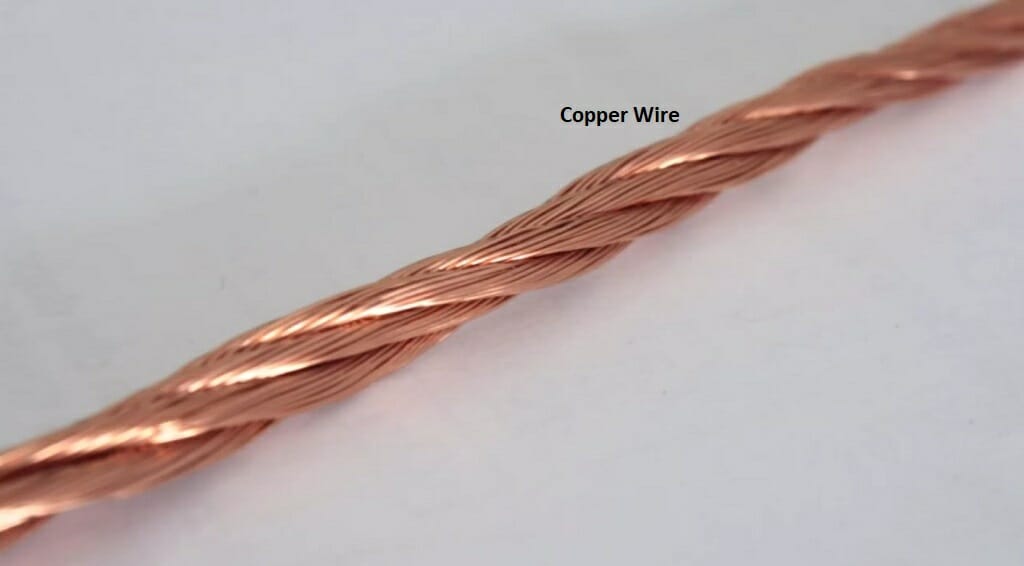
Both aluminum and copper are excellent conductors. But, which one is more suitable for an underground wiring project? (1, 2)
It depends on many factors. So, here are some facts that can help you make your decision.
Tensile Strength
For any underground wire, having a higher tensile strength is crucial. It will ensure the wire doesn’t break easily. In terms of tensile strength, copper is far superior to aluminum. Copper has 40% higher tensile strength compared to aluminum. So, you’ll be able to move around the wires without any hesitation.
Thermal Expansion
Thermal expansion refers to the expandability of metal when that particular metal is exposed to heat. Usually, copper wires don’t expand that much. Compared to aluminum, copper’s thermal expansion value is low.
Conductivity
If you are not familiar with the terms of conductivity, here is a simple explanation. When heat or electrical current goes through a material, it will face some resistance from that particular material. The conductivity measures this resistance. In terms of electrical conductivity, copper is a far better choice than aluminum.
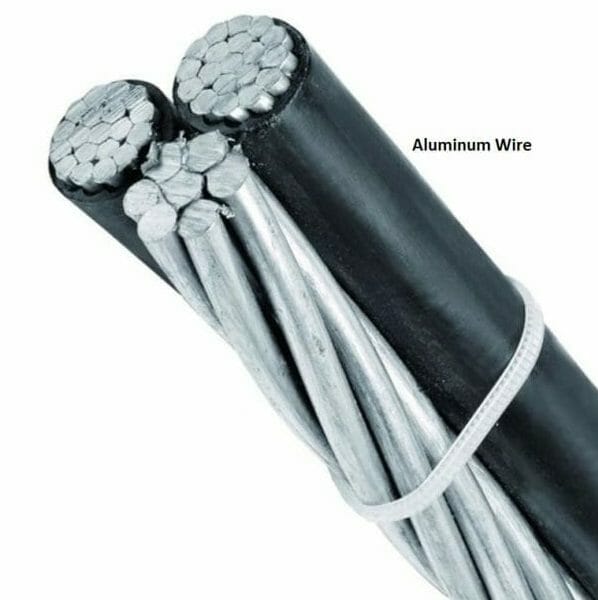
The above three facts are more than enough to make your decision when it comes to which one is better, aluminum or copper. Without a doubt, copper wires are the best option for underground wiring projects.
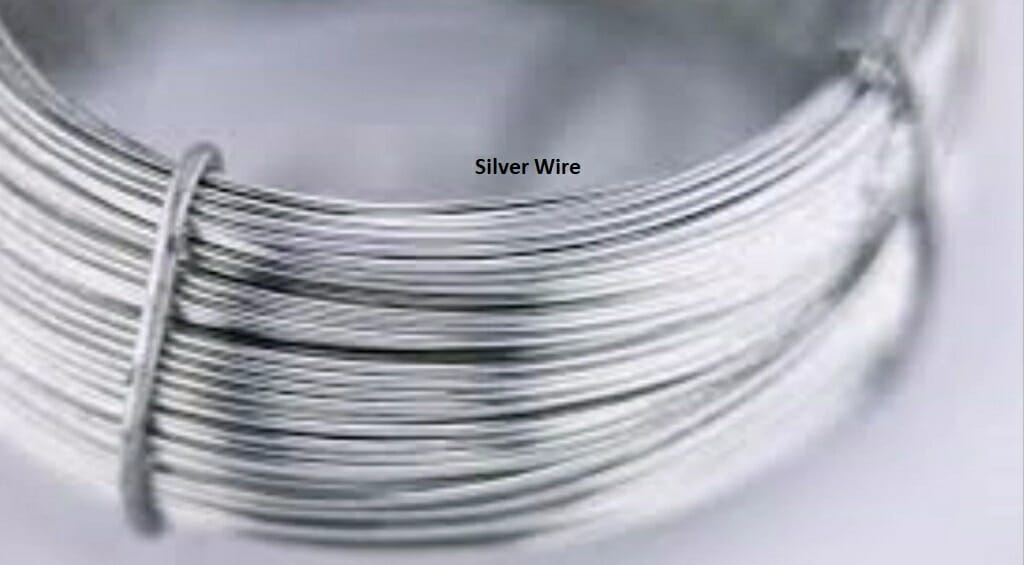
Tip: Silver wires are the best conductors. But, much more expensive than copper wires.
Voltage Drop of the 4 AWG Copper Wire
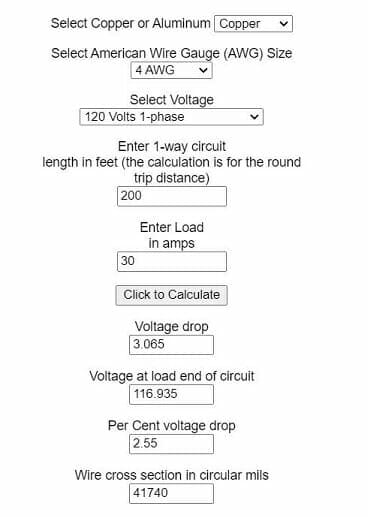
For 120V, 30 amps, and 200 feet run, the 4 AWG wire shows a voltage drop of 3.065V. As a percentage, this value equals 2.55%. So, the voltage drop is in the safe zone.
Tip: For 240V, the voltage drop is 1.28%.
Can I Use a 3 AWG Wire for 30 Amps, 200 Feet Run?
Yes, you can use 3 AWG copper wire for 30 amps and 200 feet. But when considering the conductivity, 4 AWG wire is the ideal option. 3 AWG wire is thicker than the 4 AWG wire. Therefore, 3 AWG wire will create more resistance than the 4 AWG wire. That means less conductivity for 4 AWG wires. 3 AWG wire is the maximum diameter wire that you can use for 30 amps, 200 feet run.
What is the Maximum Distance for a 30 Amps Circuit that Has 10 Gauge Wire?
When we talk about the 200 feet extension cord, 10 AWG copper wire is one of the most argued issues on the web. Most people consider 10 AWG wires has the minimum diameter for 200 feet extension cord. Is it true? Well, we are going to find out below.
For 240V
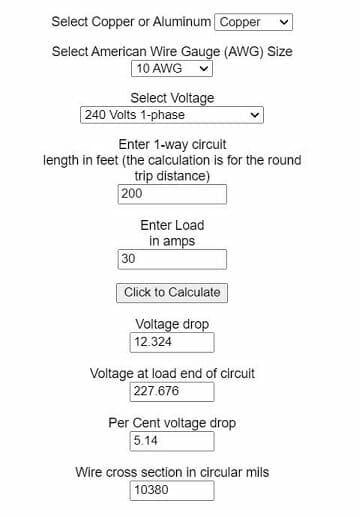
When a 10 AWG wire runs 200 feet in a 30 amp electrical current, the voltage drop is 5.14%.
Maximum distance = 115 feet (considering below 3% voltage drop)
For 120V
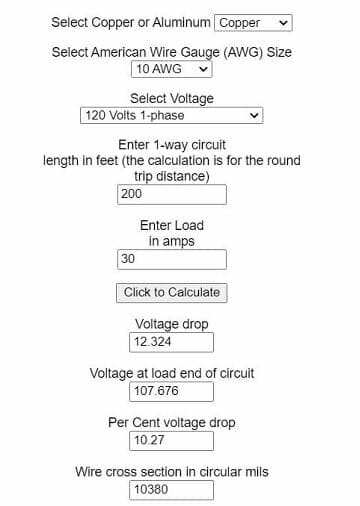
When a 10 AWG wire runs 200 feet in a 30 amp electrical current, the voltage drop is 10.27%.
Maximum distance = 57 feet (considering below 3% voltage drop)
If you plan to run it with 30 amps, the 10 gauge wire will work fine for less than 100 feet. But, this distance might vary according to the starting voltage. You will get a good idea after using a voltage drop calculator. It is the easiest method to find the corresponding distance.
Keep in mind: However, 10 AWG wire is the minimum diameter wire that can be used for 30 amps. The only downside is that the 10 AWG wire cannot run 200 feet.
Bad Outcomes of Using a Smaller Wire
The bigger the wire, the more it can handle a larger amount of current. However, these large wires can be pretty expensive. Because of that, most people try to get the job done by using a smaller wire. But, they don’t understand the consequences of such an act. For instance, smaller wires show failures when exposed to massive loads. These failures will come out in many forms. Below, we are going to discuss those bad outcomes.
Fire Outbreaks
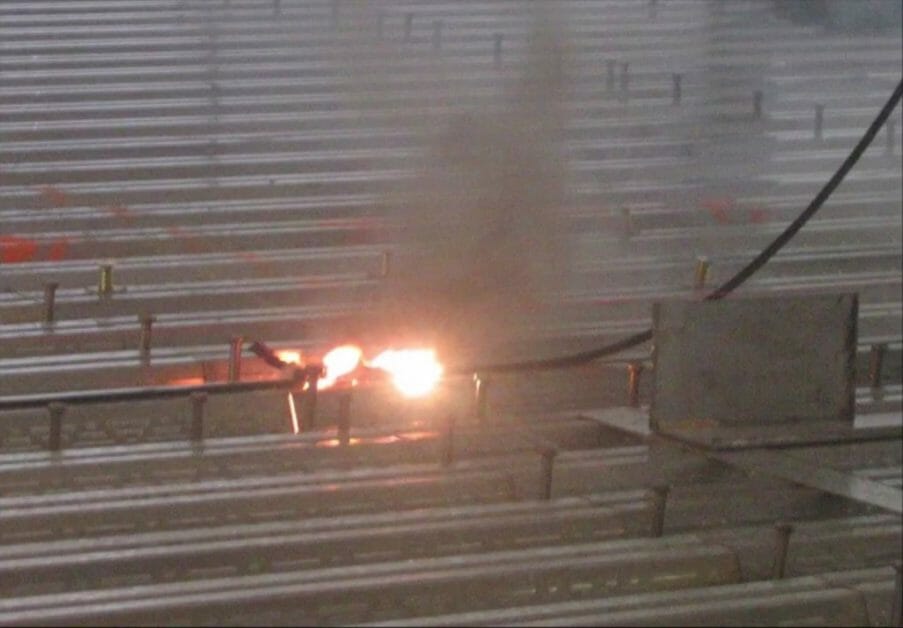
A small failed wire can cause an electrical fire. If things went out of control, the fire might raze an entire building. Even the circuit breakers might not be able to stop such overload. In some cases, you might even experience an explosion. So, fire outbreaks are the worst-case scenario for using thin wires.
Melting
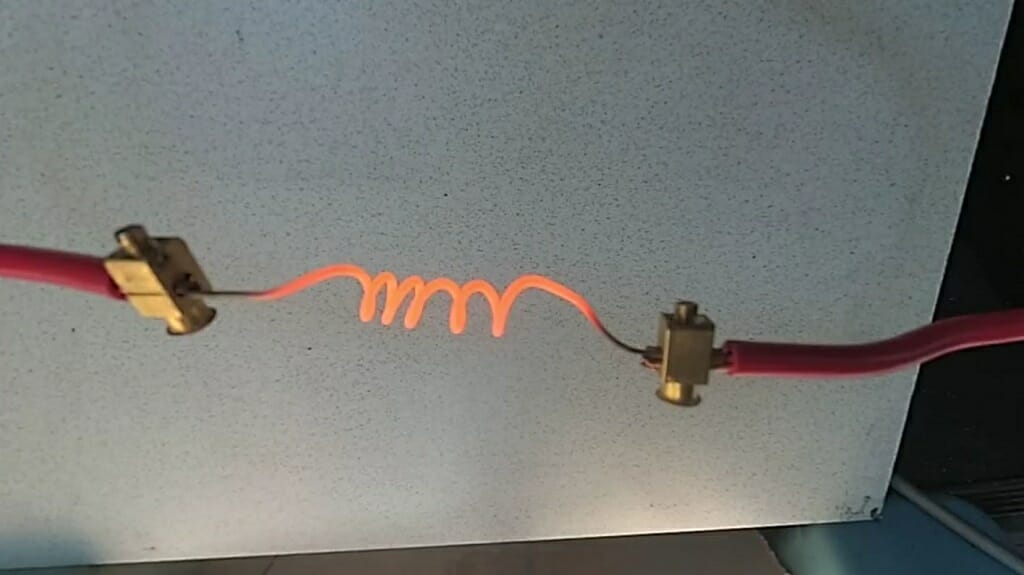
A heavy load can create a large amount of heat. This amount of heat might be too much for thin wires and capacitors. Eventually, the wires might melt down. Not only that, this melting can affect the inside of the electronics. Most of the time, those devices might get damaged beyond repair.
Damaged Appliances
As pointed out in the above section, melting can be one reason for damaged electrical appliances. But, it is not the only reason. For instance, all the devices are powered by a 30 amp circuit. So, whenever the appliances don’t get enough electricity, they might get completely burned out or partially damaged.
Voltage Drops
Whenever you run a distance of 200 feet, the voltage drop should be below 3% for lighting and 5% for other uses. If the chosen wire is unable to maintain these settings, it could damage the entire circuit. So, when you use a small wire, it might exceed this recommended voltage drop.
Wear and Tear
Copper wires are capable of withstanding more wear and tear than aluminum wires. That does not mean copper wires are invulnerable. Like aluminum wires, the copper wires will show some wear and tear if they get exposed to excessive load.
Which Wire Size is the Best for 30 Amps, 200 Feet Run?
Even though 10 AWG wire is a suitable option for a 30 amps circuit, it cannot run 200 feet. On the other hand, the 3 AWG wire has a greater thickness. That means more resistance. So, the obvious choice is the 4 AWG copper wire.
Is it Safe to Use an Extension Cord from My House to a Shed?
If you are planning to run a connection from your house to your shed, you got two options. You can run an extension cord, or you can bury the wire. Either way, you’ll get the job done. But, in terms of safety, burying the wire is the best option.
An extension cord is not a permanent solution for outdoor wiring. For an emergency, it is an excellent method. But, it is not the safest option out there. Here are some issues that you might encounter while using an outdoor extension cord.
- The extension cord might get damaged.
- An unprotected extension cord can be dangerous to others in the yard.
- Connecting the extension cord to multiple devices is not a pleasant experience.
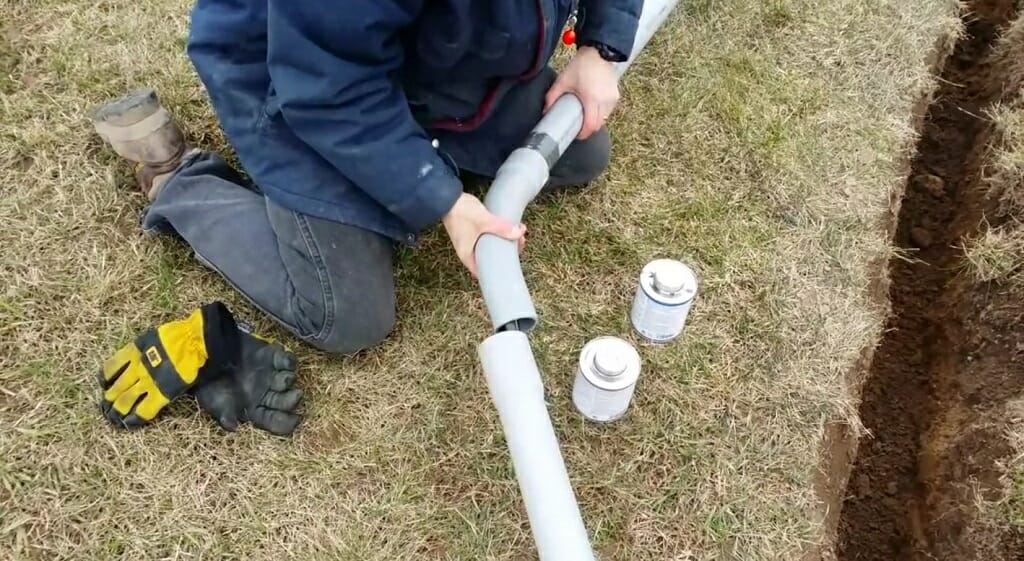
So, considering the above factors, it is safe to bury the wire. For this, you’ll need some conduits and UF wires. UF stands for an underground feeder. These wires are specially made for outdoor use.
Wrapping Up
Running an electrical wire 200 feet with 30 amps can be a complicated task depending on the choices and execution. For instance, you should choose from copper and aluminum. Then the correct wire size. Finally, the wiring method. Extension cord or conduits?
To be successful in an outdoor wiring project, you should make the correct decisions. Otherwise, you’ll end up with blown or damaged appliances.
Take a look at some of our related articles below.
- How to test a low voltage transformer
- How to test a circuit breaker with a multimeter
- Where to find thick copper wire for scrap
References
(1) aluminum – https://www.britannica.com/science/aluminum
(2) copper – https://www.britannica.com/science/copper
Video References
LDSreliance
RODALCO2007
RMSpeltz Farm – ReefDVMs
